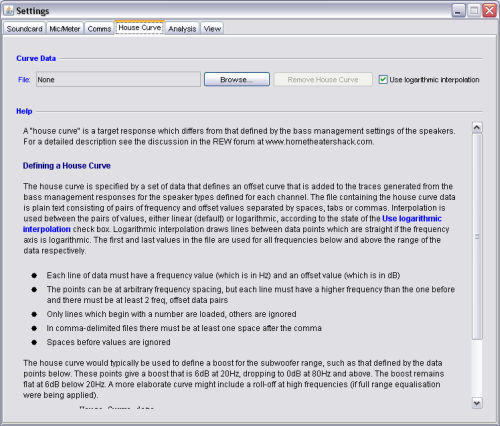
A "house curve" is a target response which differs from that defined by
the bass management settings of the speakers. The House
Curve Preferences allow a file containing house curve data to be loaded, or
a curve that has been loaded to be removed. The selection is remembered
for the next startup.

The house curve is specified by a set of data that defines an offset
curve that is added to the traces generated from the bass management responses
for the speaker types defined for each channel. The file containing the
house curve data is plain text consisting of pairs of frequency and offset
values separated by spaces, tabs or commas. Interpolation is used
between the pairs of values, either linear (default) or logarithmic,
according to the state of the Use logarithmic interpolation
check box. Logarithmic interpolation draws lines between data points which are
straight if the frequency axis is logarithmic. The first and last values in the file are used for all
frequencies below and above the range of the data respectively.
House Curve data
20 6.0
80 0.0
When a house curve has been loaded the